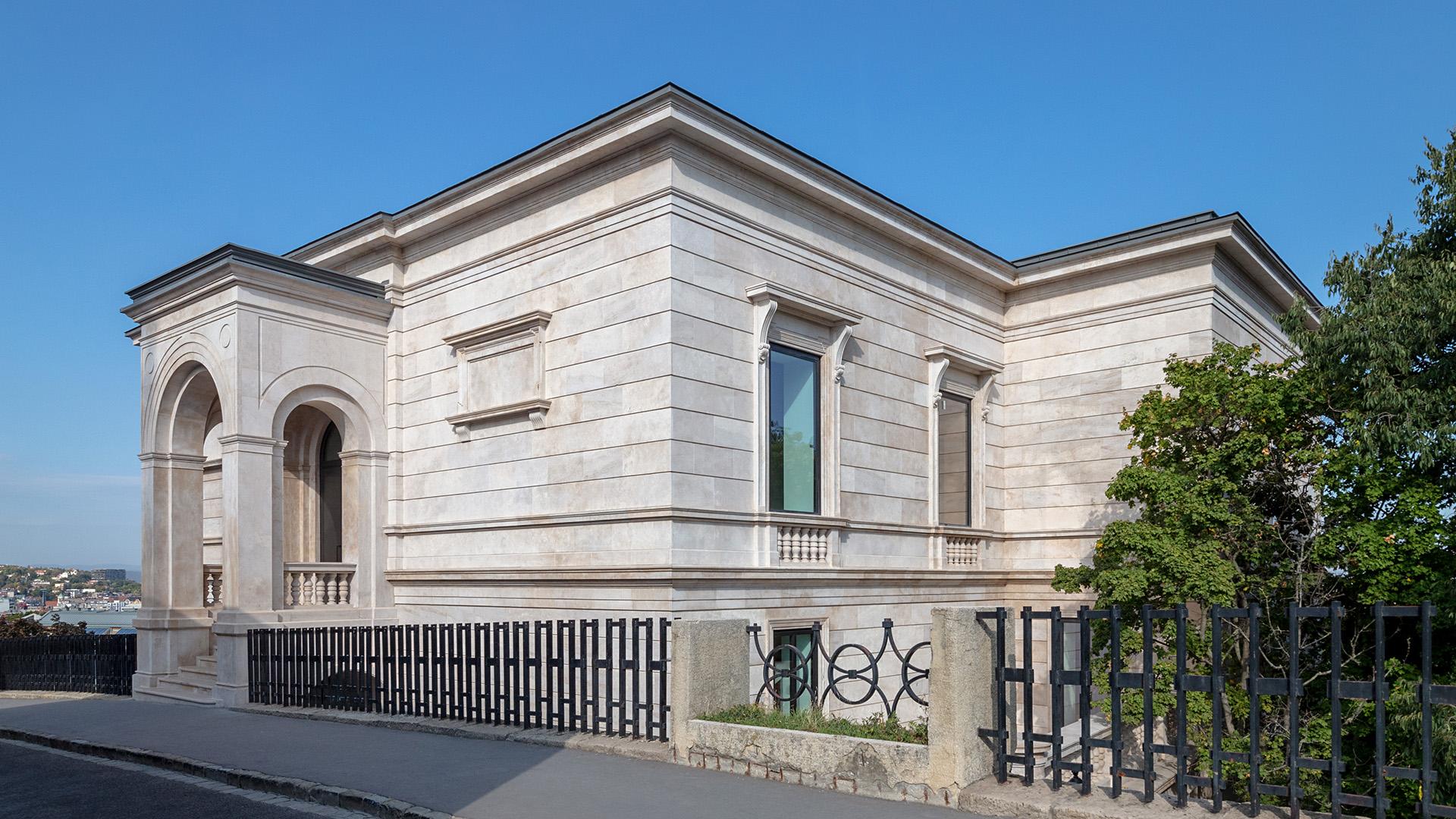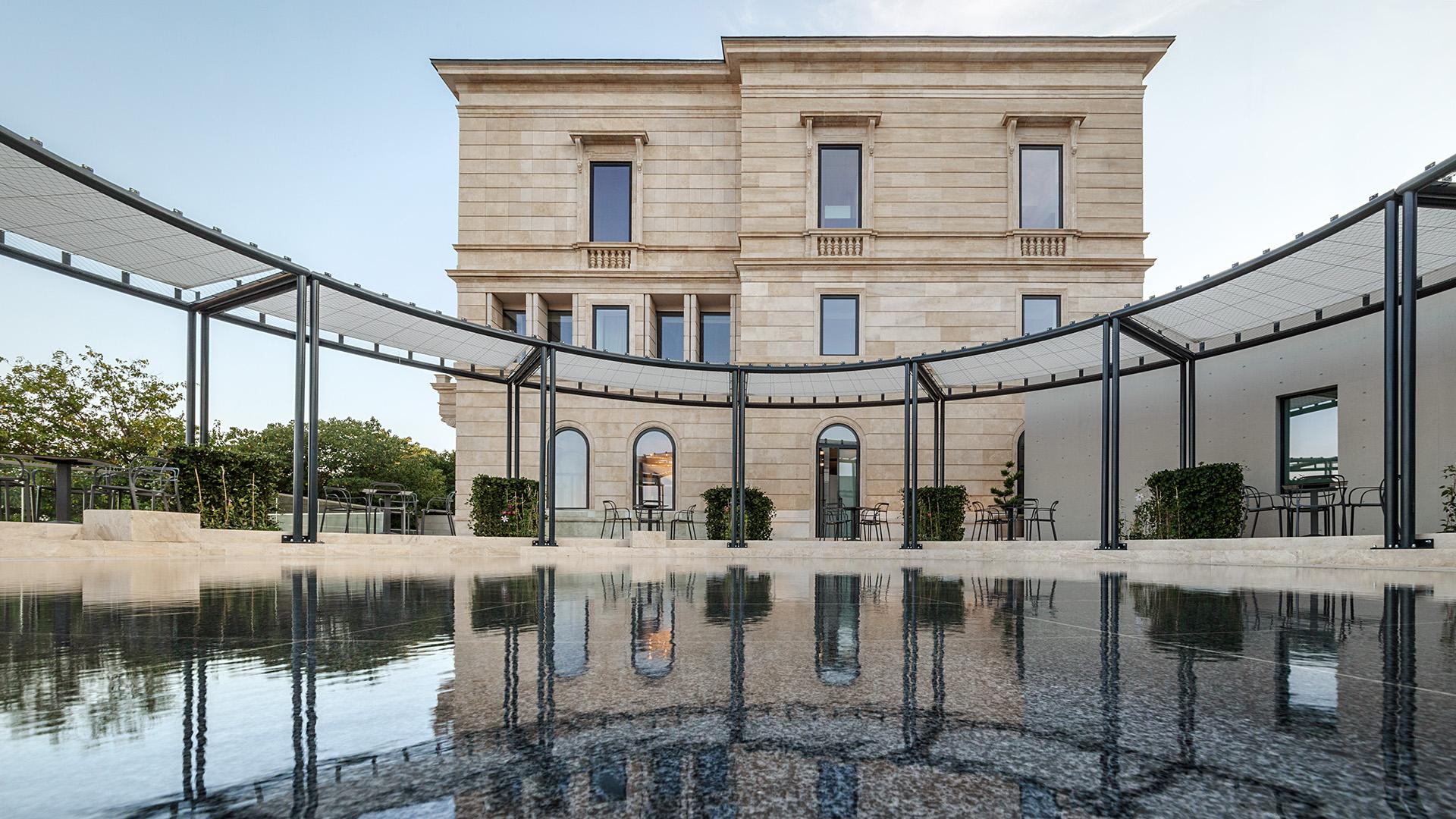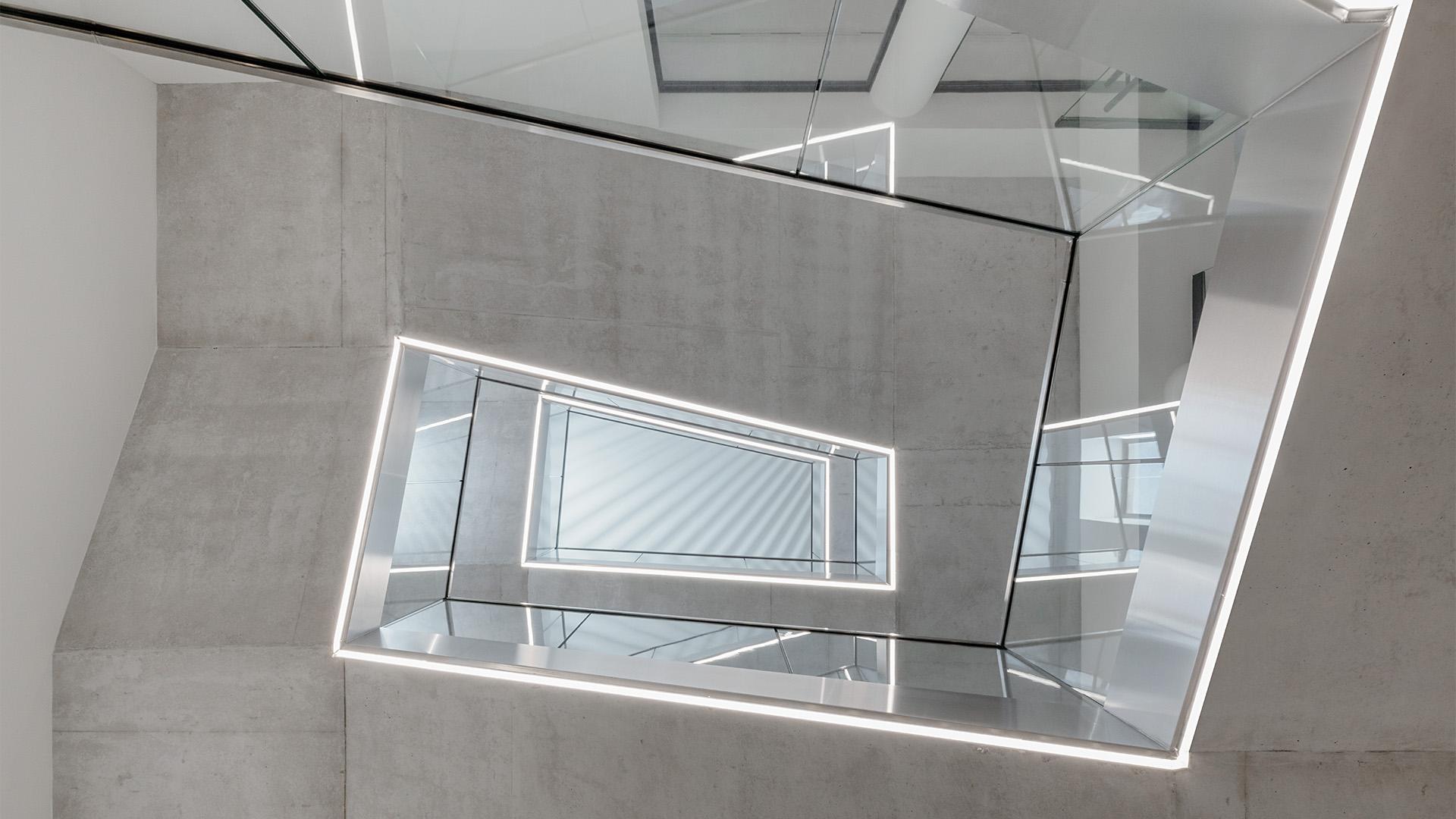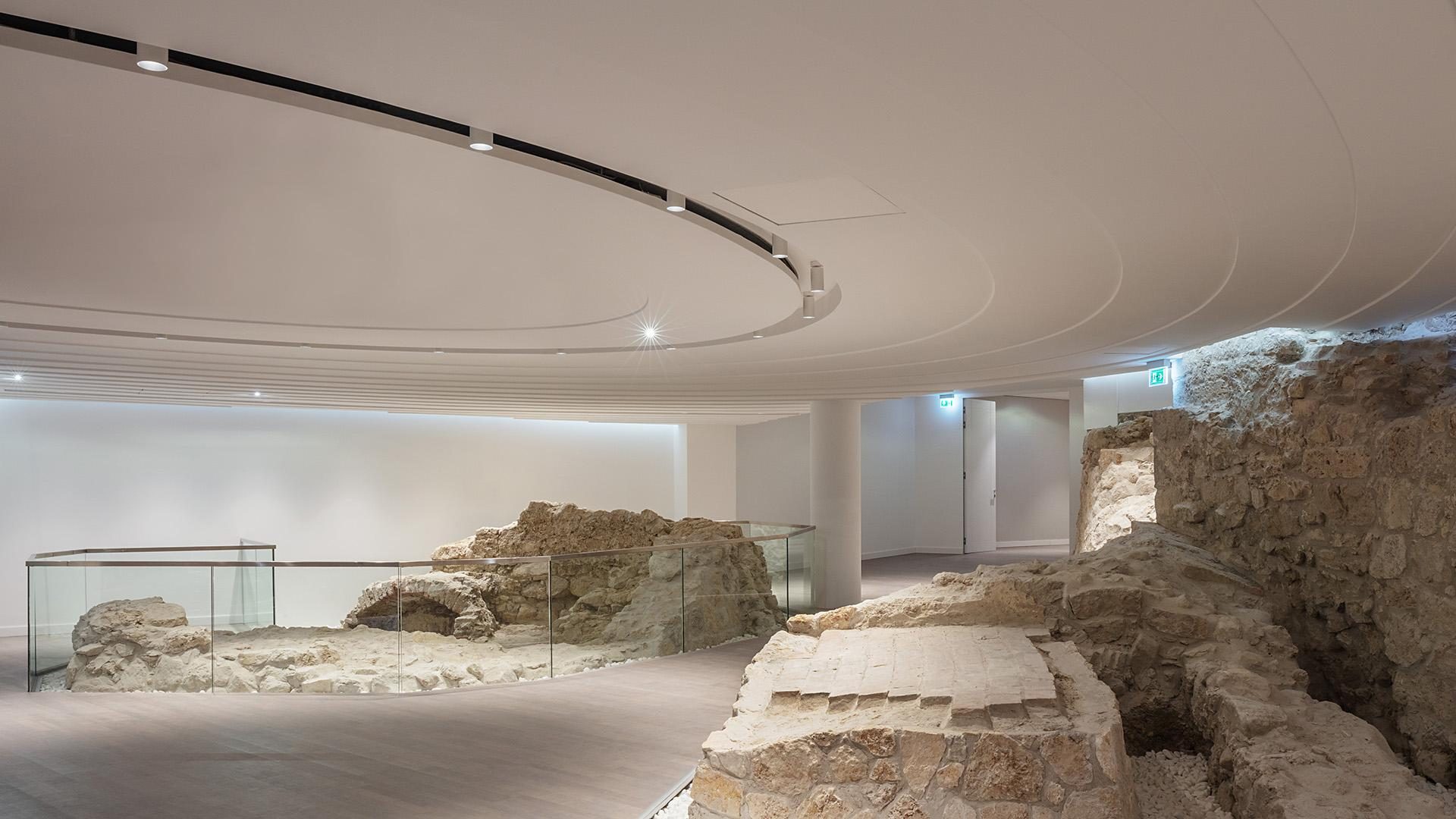The villa that was originally designed by one of the greatest Hungarian architects Miklós Ybl on the most spectacular plot of the Buda Castle Hill has been entirely rebuilt. After the Hatvany-Lónyay era the SS used the building as a casino but later it was completely demolished in a bombing raid. Not only does it possess tremendous historic and cultural background, but it also shelters archeological findings so it is quite rightfully one of the most exciting architectural challenges of the capital city. The current classicist facade is an ostensible crust on the building. Due to the moveable panels of the facade of the modern palace, the walls can be opened towards the panorama of the river Danube.
The history of the building, which is situated on the slopes of the Buda Castle right on the corner of Kirély Lépcső and Hunyadi János street, dates back to the 12th century. Centuries ago this place was scattered with craftsman houses then the Turks built the Golden Bastion together with a line of defense that connected the river Danube with the castle in 1685. This former bastion was the basis of the three-storey family residence of prime minister Count Lónyay designed by Miklós Ybl in classicist style between 1870 and 1872. During World War II it was completely destroyed in a bombing raid. At the time of the reconstruction of the Buda Castle the remaining ruins were entirely cleared and the site was bare and empty for 50 years.
In 1996 the land was purchased by a development company that intended to establish a world-class cultural and gastronomical centre there. However, local municipality regulations demanded that the new building must follow the original classical style of the villa designed by Ybl. After the archeological explorations the building became structurally complete in 2006 and BORD Studio was entrusted with planning the building.
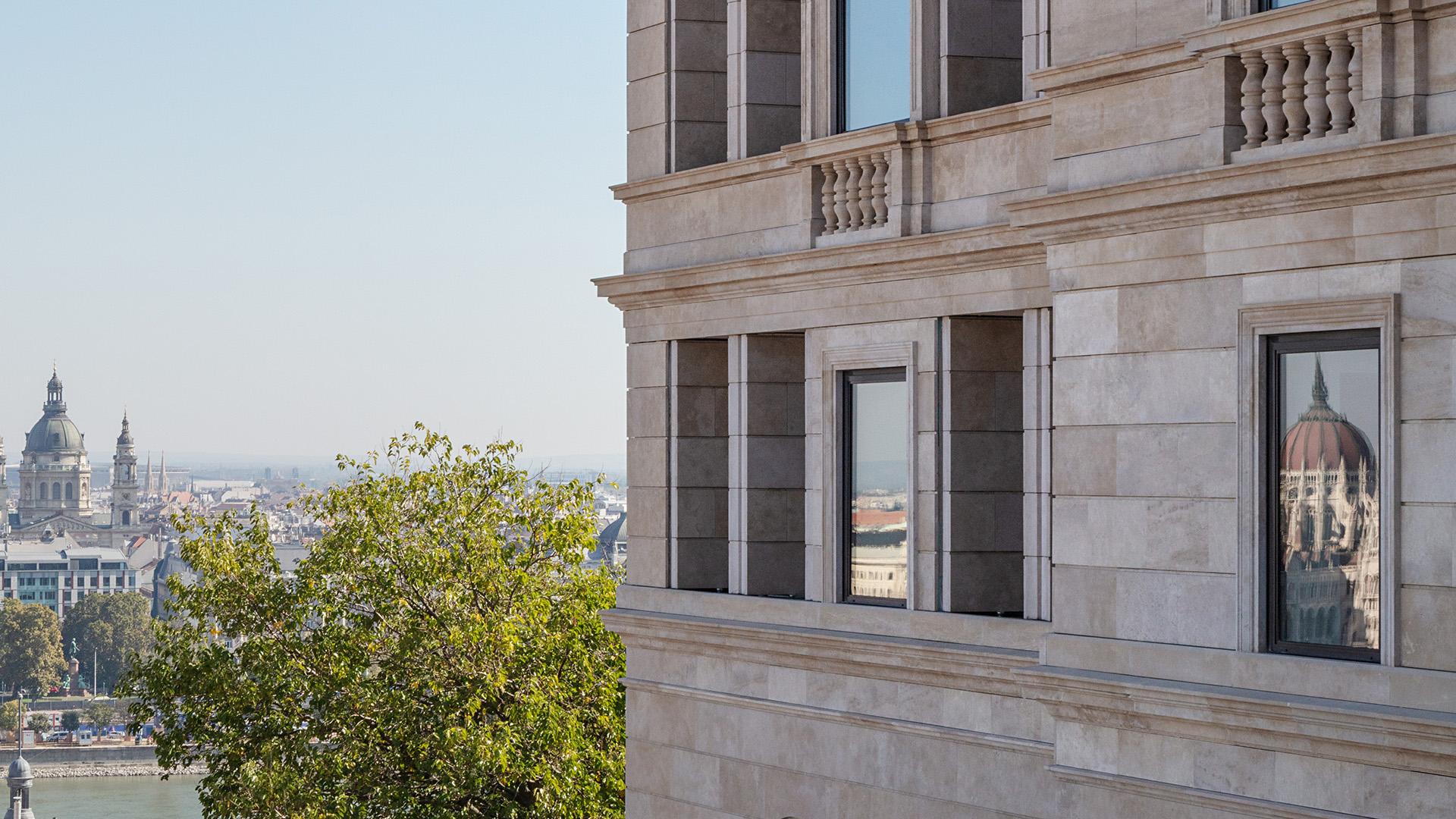
The complicated functional and structural solutions demanded by the building and the accentuated contractual needs were all met with innovative architectural solutions.
The reinforced concrete pillar frame structure had offered plenty of solutions for further planning. The building received a limestone cladding invoking the original architecture. According to the architectural concept the classicist facade – the legacy of the past – is only to appear as a kind of vision on the building. This thought brought forth the current image of the Villa. 48 electronically controlled, 55cm wide, 8cm thick reinforced concrete panels hold the structure of the stone coverage of the building that can open up the facade at a push of a button towards the panorama view.
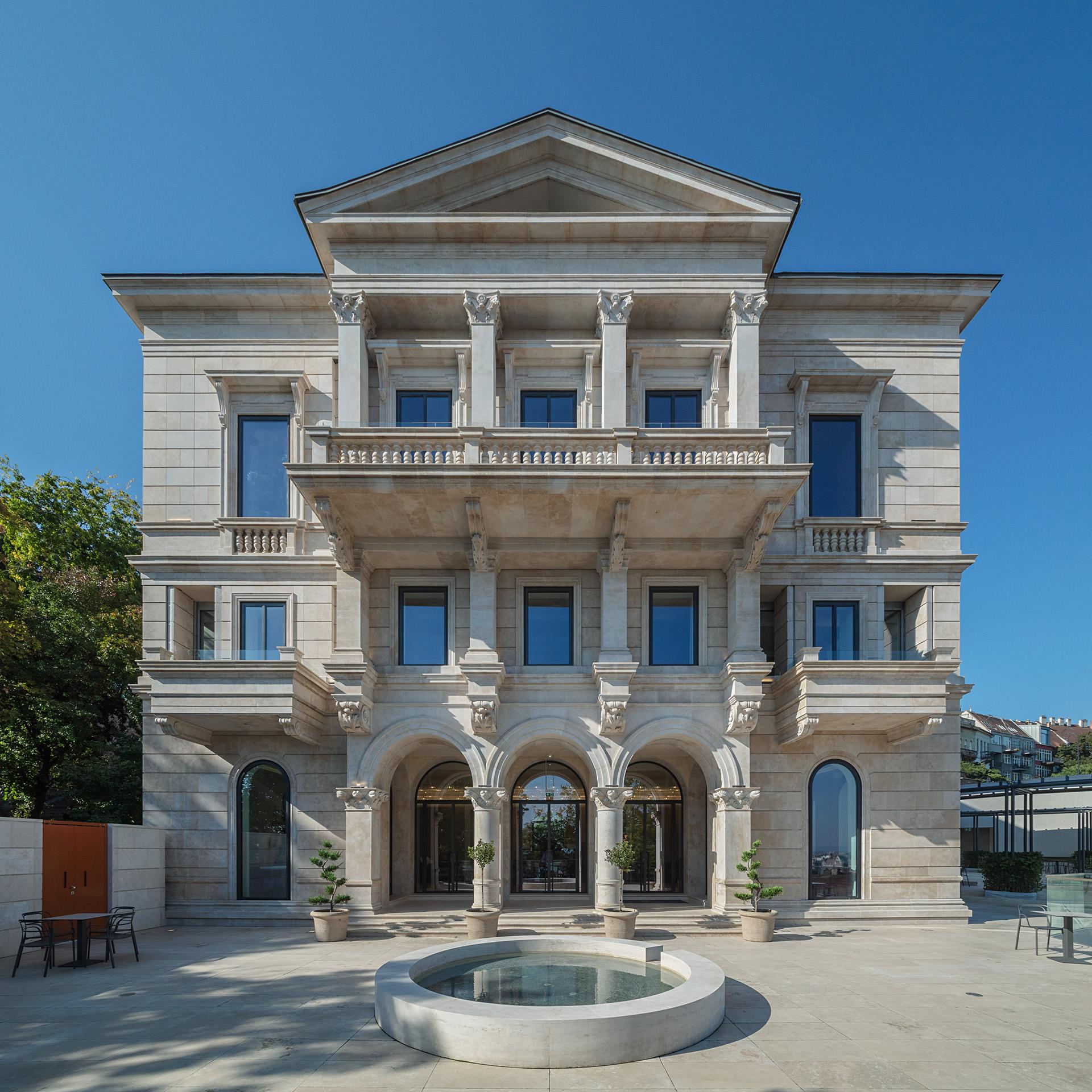
The current building maintains the volume and interior space structure of the original Villa Lónyay-Hatvany. Its main entrance is still from Hunyadi János street, through the bridge arching above the alley connecting Csónak street and Király lépcső. This is the top floor of the building which serves representative purposes with its high ceiling interior. Underneath this there are offices, and further down, on the ground floor we can find a restaurant. Next to building there is a garden with a rose arbor that embraces a fountain. One of the most fascinating locations of the garden is the panorama terrace designed by Ybl.
The atmosphere of the area below ground level is defined by a 29m long, 8m high upward tapering Ybl retaining wall that used to serve the original terraced layout of the garden. Due to the archeological excavations in the garden the original role of the wall is now completely lost. The sight of the monumental, freestanding wall is spellbinding. This is why the three-storey basement below the rose arbor is facing it with a top to bottom glass facade. The beauty is further enhanced by the reflections of the water surface between the two volumes. In this part of the basement there is a smaller auditorium-exhibition lounge, offices, service functions, a parking lot and the kitchen of the restaurant.
The walls of the Golden Bastion, which can partly be found below the outline of the villa, connect directly to the Ybl retaining wall. This is the so called “Bastion Lounge” which will function as a concert hall, exhibition lounge and a garden of ruins exhibiting the excavated medieval wall parts. The oval, amphitheatre-like space with its almost dome shaped plasterboard suspended ceiling has excellent acoustics and can take up to 120 people.
Project info
- Project Name Villa Lónyay-Hatvany
- Location Budapest, Hungary
- Years of Design 2006-2021
- Client Batthyány Lajos Foundation
- General Design BORD Architectural Studio
- Head Architect Peter Bordás
- Coordinating Architect Róbert Benke, Róbert Gulyás, Dorka Hindy
- Structural Engineering TM Janeda Ltd. – Volkai János (†)
- Mechanical Engineering BORD HVAC Engineering Llc. - Zoltán Hollókövi
- Landscape Architecture Gardenworks Landscape and Garden Designer Office Ltd.
- Electrical Engineering Artvill Ltd.
- Photograghs Tamás Bujnovszky
